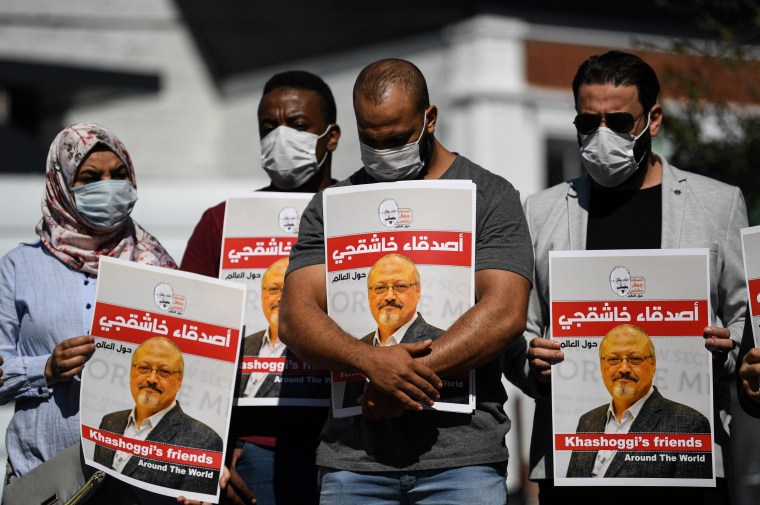On Friday, the United States laid the blame for the murder of Saudi journalist Jamal Khashoggi squarely at the feet of Saudi Crown Prince Mohammed bin Salman in a long-awaited report from the Office of the Director of National Intelligence. The release of the report, which is just three pages long, signaled a change from the previous U.S. administration, which had refused to publicize intelligence findings on the murder in what critics said was Trump’s decision to shield the crown prince.
But while U.S. President Joe Biden has indicated a shift in tone and policy, it’s unclear how far he’ll go to hold the crown prince accountable. Amid indications that the U.S. won’t directly sanction bin Salman, calls are growing for the administration to change course and punish the leader before he ascends to the Saudi throne. Here are three key takeaways from the report.
1. Bin Salman cemented power, leaving no one else to blame.
The report notes that since being named crown prince in 2017, bin Salman has had “absolute control of the Kingdom’s security and intelligence organizations, making it highly unlikely that Saudi officials would have carried out an operation of this nature without the Crown Prince’s authorization.”
In a 2018 op-ed for The Hill, CPJ laid out this consolidation of power in further detail: bin Salman created the Presidency of State Security, moved the security and intelligence agencies under its umbrella and elevated the presidency’s head to minister level while sidelining the Saudi Interior Ministry. In effect, bin Salman removed any challenge to his ascension to the Saudi throne – as well as anyone to whom he could convincingly redirect responsibility for Khashoggi’s murder.
2. Previous sanctions didn’t go far enough.
In November of 2018, the U.S. Treasury Department sanctioned 17 Saudi officials – not including bin Salman — under the Global Magnitsky Human Rights Accountability Act. The sanctions, which blocked the individuals from entering the United States and froze their U.S.-based assets and financial transactions, were critical, but only the first step toward accountability.
The ODNI report named, with “high confidence,” more than a dozen individuals as having “participated in, ordered, or were otherwise complicit in or responsible” for Khashoggi’s death. (An initial version listed 21 people; it was replaced by a report naming 18 CNN reported; an ODNI spokesperson told CNN that three had been included “erroneously.”) Most of these were people included in the Magnitsky sanctions, according to CPJ’s review.
After the ODNI report was released the U.S. government said more punishments were coming. In a statement the U.S. State Department said it would be denying visas to 76 unnamed Saudi individuals who were involved in Khashoggi’s murder and threatening other dissidents overseas. But neither the ODNI report nor the State Department release indicate any repercussions for bin Salman personally.
3. Key questions remain unanswered.
With its unequivocal blaming of bin Salman, the report confirms what Khashoggi’s loved ones and advocates worldwide suspected. Yet the report makes clear there is still much to learn; it notes that U.S. intelligence officials do not know how far in advance the crown prince approved the plot, and the precise logistical involvement of specific Saudi security and intelligence apparatuses. Additionally, the report doesn’t say whether U.S. intelligence knew in advance of any threats to Khashoggi – a question which guides an ongoing CPJ-led lawsuit.
Yet the report’s conclusion that Saudi security and intelligence act only with bin Salman’s blessing has important implications that go beyond the Khashoggi case. It lays the groundwork to demonstrate bin Salman’s culpability in the Saudi state’s imprisonment of journalists; according to CPJ’s 2020 prison census, the country is the fourth worst jailer of journalists in the world. As CPJ has documented, Saudi Arabia has tortured journalists and surveilled activists abroad.
